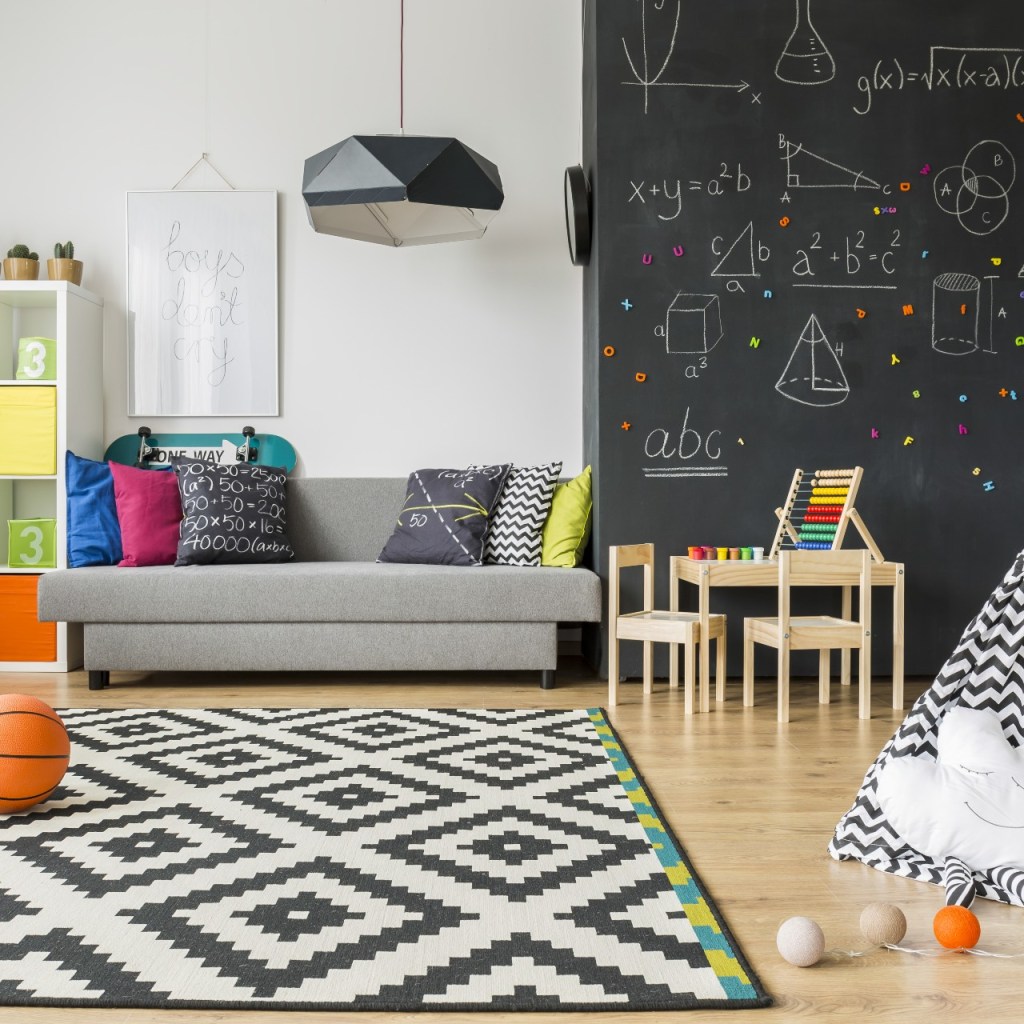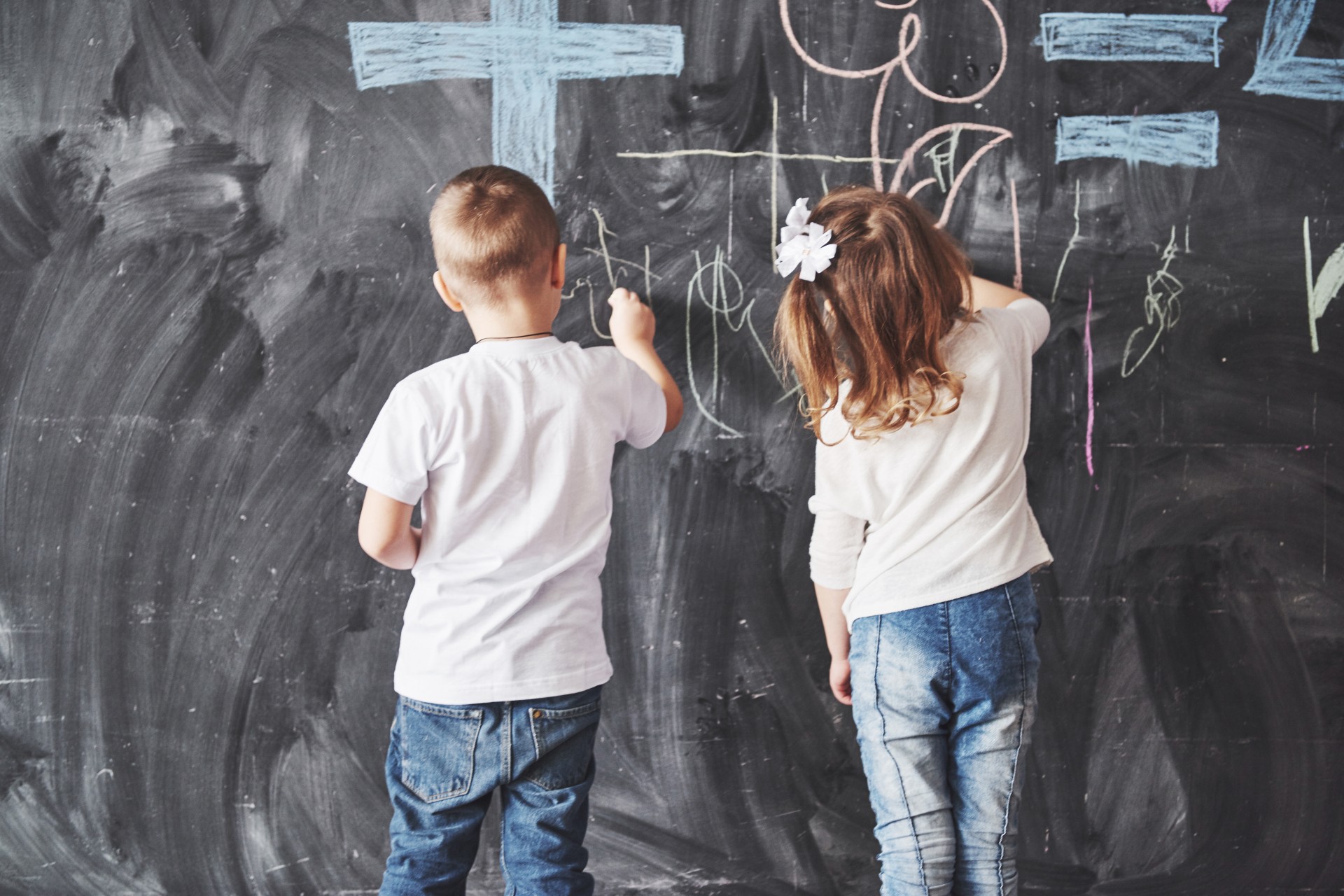Drawing on the walls is something most of us might have dreamed about a time or two when we were children. There is something naughty about putting marks on an interior wall that drove the idea of wanting to do it even further, while understanding that if we did, punishment would be swift. Luckily, thanks to the introduction of whiteboard and chalkboard brush-on style paint, kids can have an entire wall of their rooms dedicated entirely to their own chalk-drawn creativity.
Having a wall to draw on, solve math problems, list chores, and write schedules on really frees up space in your child’s room, and it gives a little nod toward their overall creativity. Plus, the idea of being able to color all over their designated wall freely often unleashes and unhinges their imagination, while also deflating the desire to color on other walls.

It’s a yes from us
Parents, especially homeschooling or home-based teaching parents, need space to spread out when instructing their children for the daily assignments, or they simply want a larger space to work on complex math problems or break down sentences to extrapolate key details and main ideas. Finding scrap paper or filling notebooks can be excessive, especially when looked at from a planet-friendly standpoint. Wasted paper wastes trees.
Having a washable and reusable space like your child’s wall to assist with homework problems gives them the freedom to just create. Whether it is gibberish written across the board in bright blue chalk or a picture of your most recent trip to the park, both you and your children will enjoy the freedom of expressiveness and individuality.
Planning and prepping the space
If you are ready to start planning out the area where your chalkboard wall will go, it’s important to measure the wall accurately and prep the area for paint. This usually involves the following:
- Discuss the idea with your family, listening to their input, then select the room and specific wall that will be transformed.
- Purchase the chalkboard paint and supplies of choice. We’d suggest Krylon’s brush-on version. If your previous wall color was light, you might need to apply two coats of chalkboard paint to cover everything. Consider purchasing multiple cans if that’s the case.
- Wash the walls with a few tablespoons of dishwashing liquid in a bucket of hot water. The detergent breaks down dirt and oils left behind on walls.
- Wipe down thoroughly with a clean, damp cloth to remove detergent residue.
- Allow the walls to dry completely before applying primer/paint.
- Apply painters’ tape to the wall seams, ceiling seams, and any edge you want to keep clean and free from new paint.
- Apply paint. If a second coat is needed to cover previously light-colored walls, allow the first coat to dry completely before applying it.
- Once the paint has dried thoroughly, remove the painters’ tape gently, revealing your newly painted chalkboard wall.

Doing our due diligence
It wouldn’t be right to discuss all the perks of having a chalkboard wall in your home without discussing the cons of having something of that nature under your roof. While the theory of having a chalkboard wall helps children avoid coloring on areas where there isn’t one, there have been other instances where the wall exacerbates the desire to do so on all walls. For almost all parents, that is an absolute no, resulting in some form of discipline.
If you find your child starting to move off the chalkboard wall and onto causing destruction to your normal functioning ones, it could be time to readdress the rules of the chalkboard wall. Encouraging appropriate play will help carry home the lesson of “coloring in your designated area.”
A chalkboard wall can be an amazing time- and space-saving tool for kids of any age or size. They make fantastic and eco-friendly places to take notes, write memos, keep important reminders written down, or help solve complex math problems. By implementing one in your household, you are giving your child the power to get up and physically put themselves into their work.
You are also giving them a free space to exercise their mind creatively and independently. It is also a way to present their emotions genuinely, based on what they are drawing and designing. Not only is a chalkboard wall a fantastic homeschooling and art-related educational tool, but it is also an inexpensive way to liven up the room without breaking the bank.



